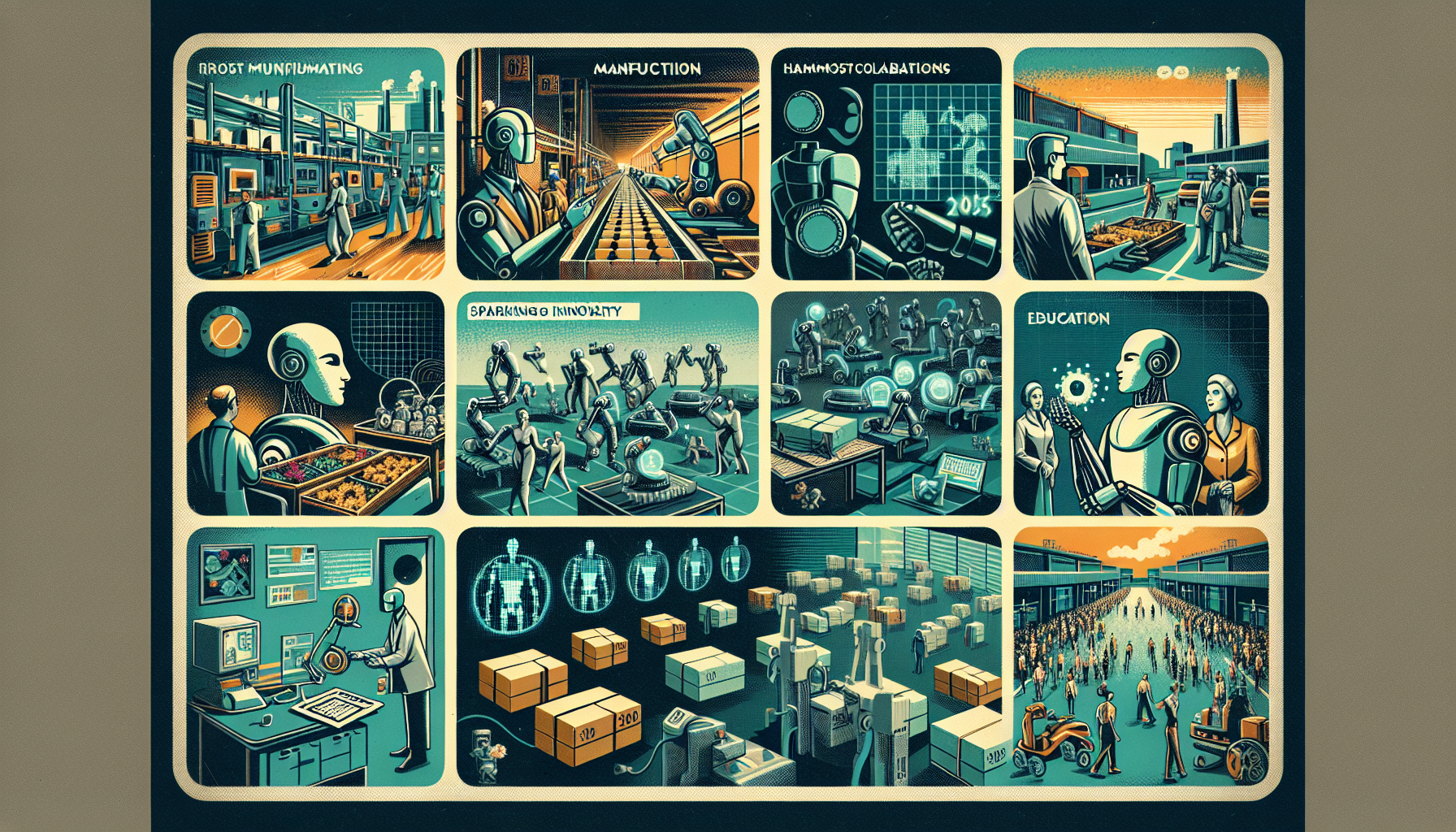As we journey into 2025, the world of robotics stands at the brink of a transformative era. The key driver of this change is the collaboration between humans and robots, a partnership that brings efficiency and innovation across countless sectors—be it manufacturing, logistics, healthcare, or education.
Unlocking New Levels of Productivity
The fusion of human and robotic efforts leads to remarkable spikes in productivity and efficiency. Together, they accomplish tasks impossible for each party alone. In factories, collaborative robots, known as “cobots,” minimize idle time for workers by up to 85%. This collaboration maximizes productivity and ensures resources are used to their fullest potential.
In industrial environments, this harmonious human-robot team optimizes workflow. Robots take on monotonous, labor-intensive, or risky jobs, freeing up human workers for more value-driven tasks that demand creativity and judgment. This stratified labor not only boosts productivity but also enhances safety by keeping humans out of harm’s way.
Pioneering Robotics Advancements
Come 2025, cutting-edge robotics will further elevate human-robot collaboration:
- Hyper-Intelligent Robots: With advanced artificial intelligence, these robots will tackle complex tasks, understand human language, and innovate. Their adaptability paves the way for smoother human partnerships.
- Autonomous Mobility: Equipped with sensor technology and algorithms, these robots can maneuver through intricate environments on their own, whether in logistics or emergency response.
- Surgical Robotics: In healthcare, precision surgical robots will enhance procedures, achieving improved outcomes and reducing recovery times. Robotic caregivers will assist in patient monitoring and medication delivery.
- Robotic Exoskeletons: These wearable robots will boost the strength and endurance of workers, transforming industries like manufacturing and healthcare, enabling tasks to be conducted safely and effortlessly.
Industry 5.0 and Human-Centric AI
Industry 5.0 places a spotlight on the human role in the workplace, with AI and robots automating less essential tasks. This approach ensures that humans engage in creative, innovative roles, with robots undertaking monotonous or risky operations. AI empowers robots to understand their environment, make choices, and learn from human interaction, fostering natural collaborations between human and machine.
Benefits for Economy and Environment
The fusion of humans and robots yields notable economic and environmental gains. Robots programmed for energy efficiency cut down on energy consumption and waste, curtailing the carbon footprint of conventional manufacturing processes. Such improvements not only conserve resources but also lessen environmental harm.
Moreover, industries enjoy a swifter return on investments with human-robot collaboration. The streamlined efficiency of robots aids in quick recouping of costs. These systems blend smoothly into existing production setups, requiring fewer spatial and configurational adjustments.
Overcoming Challenges and Paving the Way Forward
The promise of human-robot collaboration is vast, but not without hurdles. Ensuring safe, seamless interactions between man and machine is paramount, necessitating intuitive communication methods and adaptability to human cues in various situations.
As we advance, technological evolution will spawn even more sophisticated systems of collaboration. An industry powered by the union of AI, robotics, and human ingenuity will redefine possibilities and reshape the way we live and work.
In summary, the melding of human and robotic talents stands ready to redefine industry innovation as we embrace 2025. By tapping into the strengths of both entities, industries achieve unparalleled levels of efficiency, productivity, and sustainability. This ongoing evolution in robotics and AI will continue to enhance our collaborative endeavors, heralding a future where humans and robots together unlock extraordinary achievements.

Leave a Reply